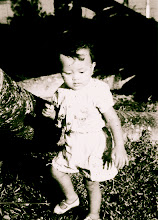

I am building a new school in Potein, Cambodia. It will be 2 storeys with eight classrooms of about 60 sq m. each. The old timber school was run-down and recently demolished. The new school will be built of concrete frames, brick walls and clay roof tiles. It will cost about USD 35K to build.
Potein is the home town of the Mufti of Cambodia. The school project has his blessings. Construction began on 1st of Ramadhan and is expected to complete within 6 months. About USD 20K has been raised.
The project needs about USD 15K more to complete.
Please contact me at
isakamari@singnet.com.sg if you are interested to contribute.
Thank you.

 Al-Ameen Serve Holdings which is based in Malaysia has been organising the Qurban and Aqiqah for the Cham Malays in Cambodia for 14 years
Al-Ameen Serve Holdings which is based in Malaysia has been organising the Qurban and Aqiqah for the Cham Malays in Cambodia for 14 years







 My crew of four had the chance of filming slices of life of the Cham Malays in Cambodia. The trip brought us to Phnom Penh and several Cham Malay villages in Kampong Cham and Kampong Chnang regions. There are currently more than half a million Cham Malays living in Cambodia. According to Oknha Sos Kamry, the mufti of Cambodia, the figure was about 700,000 before the Pol Pot regime came into power but was significantly reduced to less than 400,000 after the dark years. The Cham Malays were originally from Vietnam but had settled down in Cambodia for about 300 years. Incidentally, some Cham Malays have also settled in Malaysia, Acheh and the Hainan islands since then. They speak the Cham language which is now written in the Jawi script. About 40% of the words in the Cham language can be identified as Malay.
My crew of four had the chance of filming slices of life of the Cham Malays in Cambodia. The trip brought us to Phnom Penh and several Cham Malay villages in Kampong Cham and Kampong Chnang regions. There are currently more than half a million Cham Malays living in Cambodia. According to Oknha Sos Kamry, the mufti of Cambodia, the figure was about 700,000 before the Pol Pot regime came into power but was significantly reduced to less than 400,000 after the dark years. The Cham Malays were originally from Vietnam but had settled down in Cambodia for about 300 years. Incidentally, some Cham Malays have also settled in Malaysia, Acheh and the Hainan islands since then. They speak the Cham language which is now written in the Jawi script. About 40% of the words in the Cham language can be identified as Malay.














